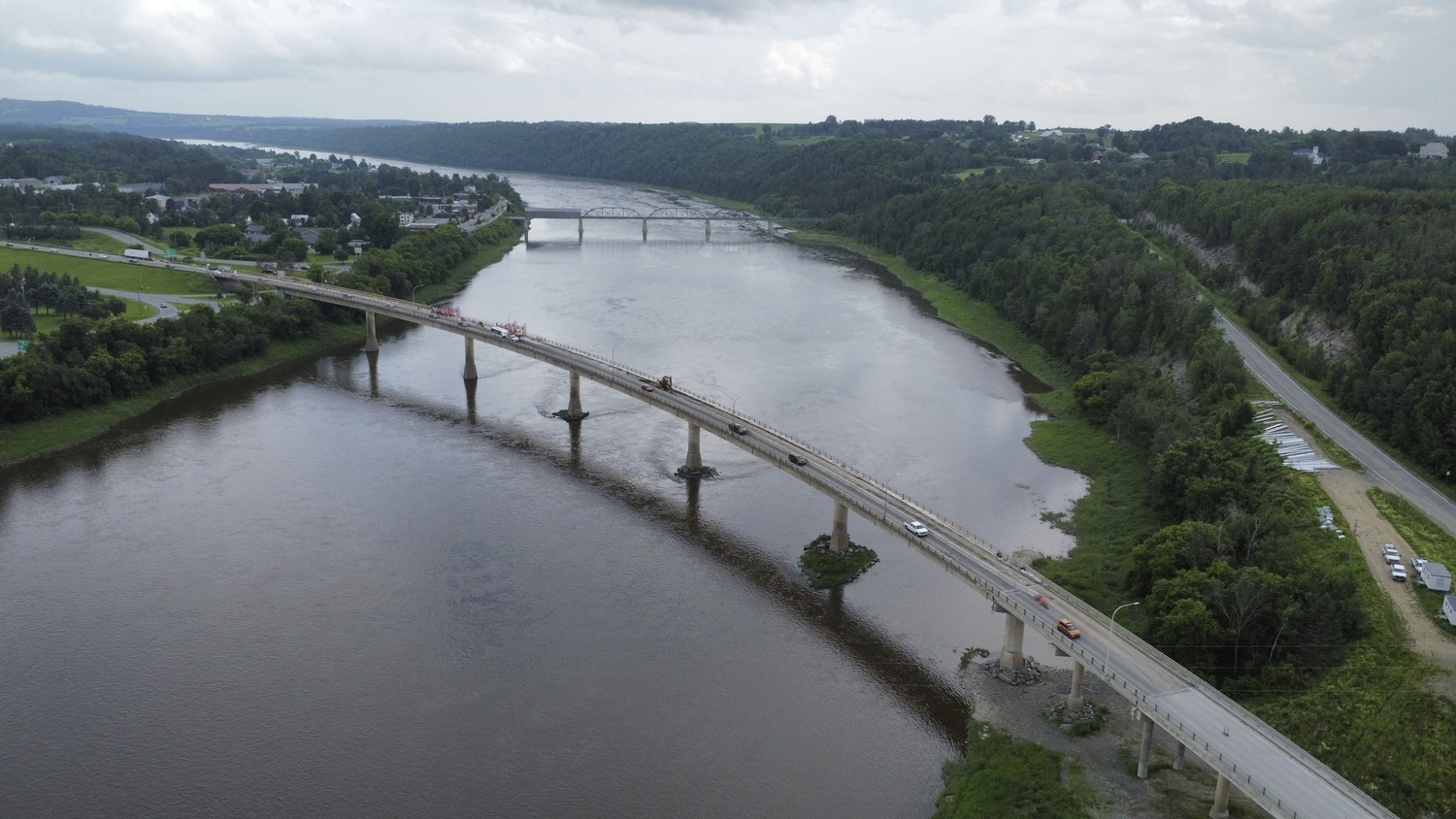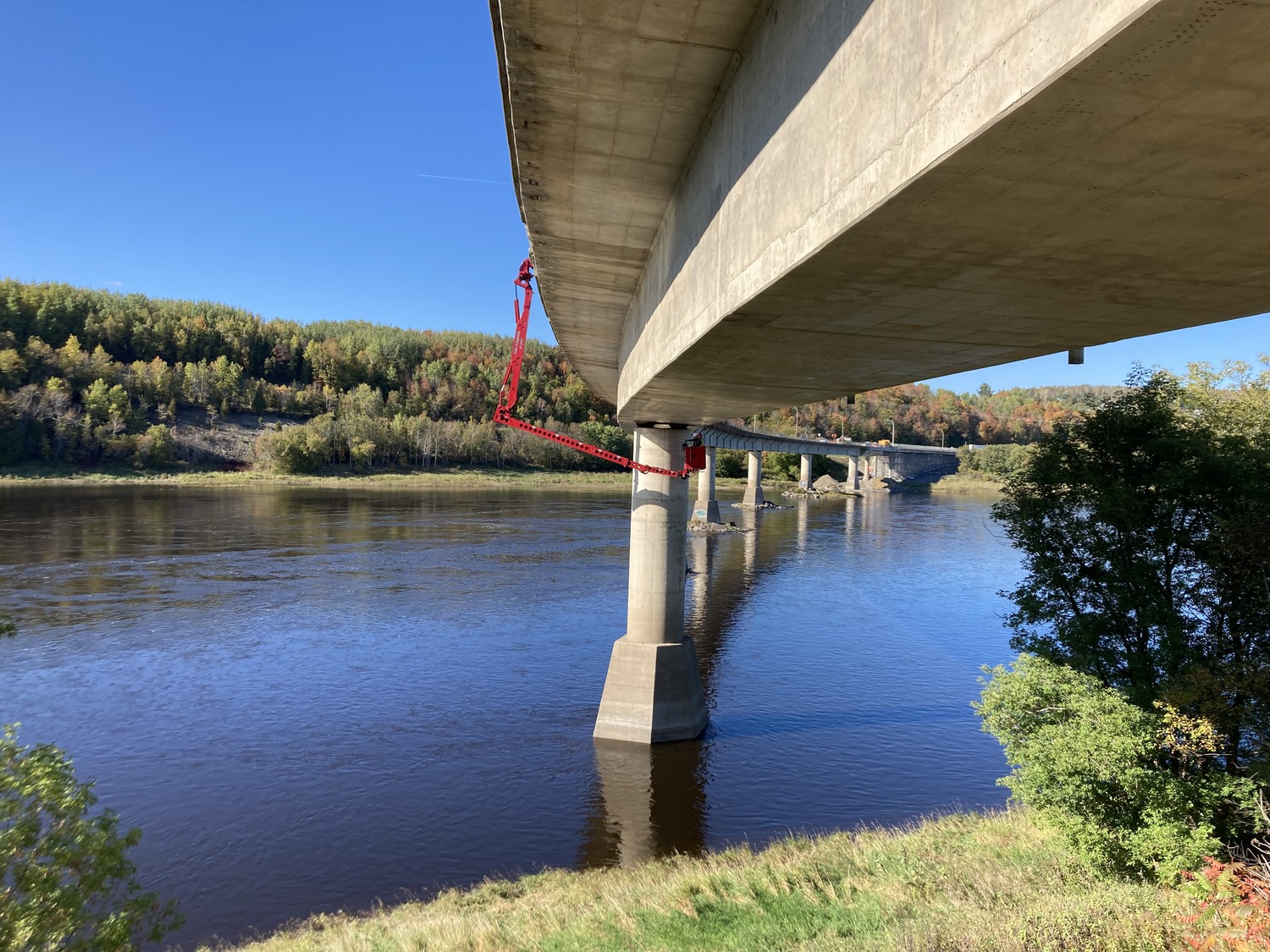The Florenceville Bridge, constructed in 1966, is a vital transportation link connecting the Town of Florenceville-Bristol with the Trans-Canada Highway. With an average annual daily traffic volume of approximately 5,700 vehicles, it supports major industrial employers. Spanning 540 meters with 16 spans, the bridge crosses both the St. John River and Route 105. It features a combination of cast-in-place, post-tensioned, and precast concrete components. The main span and south approach structures are post-tensioned both longitudinally and transversely.
Rehabilitation plan and execution
In 2015, modern condition assessment techniques revealed major structural deficiencies, prompting the development of a multi-year rehabilitation plan to extend the bridge’s lifespan by another 30 years. The rehabilitation scope included replacing pot bearings, removing and replacing multiple approach spans, major rehabilitation of the 6-span approach structure, strengthening existing superstructure components and reconfiguring the deck top for traffic barrier upgrades.
Innovative strategies
Given the unique challenges of rehabilitating a post-tensioned box girder bridge, traditional methods were not feasible. EXP developed a customized approach using surface-mounted carbon fiber rods for external reinforcement and a custom steel truss support system for deteriorated sections of the main span deck.
EXP conducted investigations, designed the rehabilitation plan and supported construction phases. Key objectives included:
- Maintaining structural integrity during construction
- Minimizing lane/bridge closures to reduce traffic delays
- Involving local community and industry stakeholders
- Providing cost-effective strategies
- Phasing the project to align with funding and labor capacity
- Piloting structural health monitoring technology
- Sharing knowledge for future projects
The condition assessment utilized modern investigative procedures such as Ground Penetrating Radar (GPR) and half-cell potential surveys, along with extraction and laboratory testing of concrete core samples. The main span bearings were instrumented with vibrating wire sensors and an autonomous data acquisition system to monitor movement of the superstructure and temperature over time, marking the first application of this technology for structural health monitoring of bridge bearings in New Brunswick.
Impact and benefits
Completion of this project enhances the resilience of the regional transportation system, supporting the bridge’s lifespan for another 30 years. This prevents detours to distant crossings, reducing travel costs, lost productivity, safety risks and GHG emissions.
This project marked one of the first significant rehabilitation of a post-tensioned box girder bridge in New Brunswick and the first use of specific instrumentation to assess bearing performance. The insights gained will inform future bridge rehabilitation projects, optimizing cost-effective value and reducing traffic impacts.
The project emphasized knowledge sharing, university collaboration and consideration of the local agricultural community. This collaboration resulted in a holistic approach to bridge rehabilitation. By utilizing pre-cast substructure components, the required duration of road closures was reduced – not a historically common practice in New Brunswick.
Knowledge gained from this project can be applied to future bridge rehabilitation efforts to help reduce traffic impacts. It has also been shared with transportation professionals through two peer-reviewed publications and three technical presentations at the following national conferences:
- CSCE Short & Medium Span Bridge Conference – July 2022
- Transportation Association of Canada Technical Committee Meetings – September 2023
- Transportation Association of Canada Annual Conference – September 2024
Services
Structural, Materials, Structural Health Monitoring


